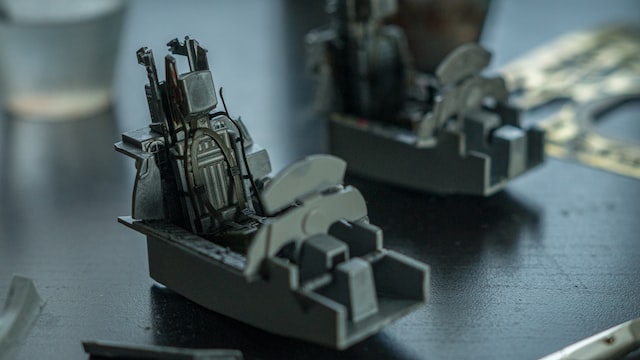Coming up with an idea for a product is an exciting attempt, but bringing it to the market can seem challenging. The past several years have witnessed a growing awareness of the importance of competitive success to production quality, so at the top of your agenda should rest the resolution to boost productivity, product quality, and new product innovation. When seeking to achieve a competitive edge, you must develop versatile parts with rigid or tight specifications, as there are the attributes that clients seek. It’s up to you to settle on the materials, manufacturing processes, and partners.
Injection moulding might be the optimal solution if you produce large volumes of parts, regardless of your industry. Many businesses prefer it for its precision, accuracy, durability, and cost savings. If you’re not sure injection moulding deserves a place within your business, please continue reading to learn more about this technology.
Injection Moulding: A Quick Overview
To put it simply, injection moulding is a process for the mass production of items made from thermoplastics, which generally require additional finishing. The use of injection moulding large plastic products is commonplace in the automotive industry. Synthetic resins are heated and melted, then sent to the mould and cooled to form the desired shape. The economics of the process are suitable for articles with complex geometry. More precisely, the cost per moulding ameliorates with scale, in spite of the sizeable initial cost of the machines. Injection moulding machines are available in various types, such as motorised machines driven by servo motors.
Injection moulding has become one of the most significant methods for processing short and long glass fibre reinforced into thermoplastics. What’s more, it’s expected that the use of injection moulding will continue to grow, much as it’s done in the past, on account of product demand. It’s currently applied in unprecedented fields, such as optics, aerospace, electricals and electronics, communications, and biomedicine. Changes in technology have had a great effect on injection moulding’s performance. For example, implementing Industry 4.0 has empowered manufacturers and companies to maximise equipment efficiency. We’re genuinely curious to know what Industry 5.0 will bring about.
Some Of The Benefits of Injection Moulding
There are many reasons why injection moulding is the go-to solution across industries. To better understand why you ought to turn to injection moulding, let’s take a closer look at its merits.
It’s Cost-Effective, Easy to Source, And Widespread
If we take into account the price per unit, injection moulding is one of the most affordable forms of manufacturing. Injection moulding machines require very little supervision and oversight, so just a touch of a button suffices to activate the system. The collaboration between original equipment manufacturers and the injection moulding company will contribute towards managing costs. Focusing on detailed processes during the design phase minimises the need for excess tooling changes, reduced downtime and other production delays. Whether your volume is 100.000 units or 100 units, you can make injection-moulded products in a way that involves the careful use of money.
It Allows Flexibility and Design Freedom
More rigid presses bind the plastic deployed in the injection moulding process, and that durability enables the design to be as detailed as required. Complex or intricately shaped parts can be made, meaning injection moulding is one of the most versatile processes for creating bespoke plastic parts. In circumstances different from those present, the parts would have to be created by way of custom means, which would undoubtedly add trailing zeros to the final price. Various plastic types are used in injection moulding, including but not limited to acrylonitrile butadiene styrene, low-density and high-density polyethene, and polycarbonate.
It Helps Achieve Consistent Products
Making thousands, or tens of thousands of products, is complex due to their unique qualities. Customers have incredibly high expectations when they purchase a product from a brand; all it takes is one bad product to destroy your chances of success. Injection moulding is capable of replicating products before being launched to the market, so they’re identical to one another. Consistency is advantageous to businesses seeking to position themselves as niche producers or distributors. If you use injection moulding, you can rest assured that all the products will look exactly the same, so your brand will feel dependable. As a matter of fact, clients will feel like your brand can be trusted.
It’s Suitable for A Wide Array of Plastics
A key advantage of injection moulding is you can use several types of plastics for your parts, which translates into the fact that you can manufacture premium products capable of meeting their objectives. Of course, different chemical formulations are required for the process to be successful. Some of the most popular injection moulding materials are nylon, acrylic, polycarbonate, polyoxymethylene, and polystyrene. Selecting the right material for a project is a daunting task, so working with an injection moulder with experience in various resins and applications is vital.
So, Are There Any Drawbacks to Injection Moulding?
There are some disadvantages to be aware of. For instance, mould makers and tooling designers are experts in their chosen fields of activity, so finding the right partner will require some effort on your part. If you make a design change, it’ll be necessary to create a new mould from scratch, so you’ll have to dig deep into your pockets. Nevertheless, an experienced partner can help you sort this out, so don’t despair. As an entrepreneur, you have many considerations to keep in mind. There’s no denying that injection moulding has plenty to offer, yet it’s all too easy to make a mistake.
To sum up, as injection moulding technology evolves, you have to make important decisions about changing existing manufacturing processes. Even if injection moulding enhances your operations over the long term, it can pose some challenges. Remember that most obstacles can be avoided, so close the doors to these obstacles and capitalise on the opportunities. Be willing to abandon what doesn’t work and focus your attention on success.










